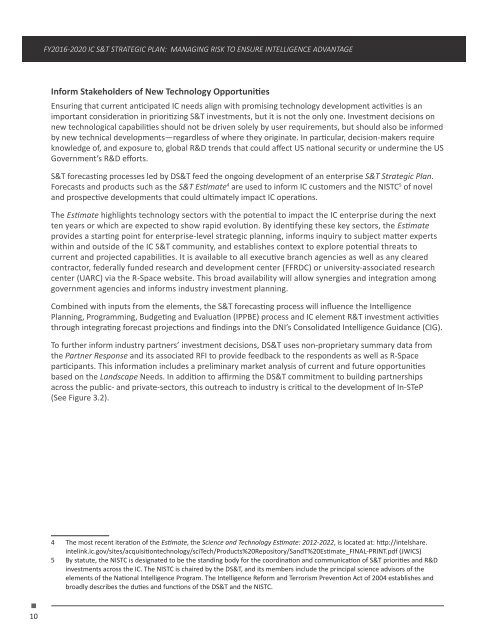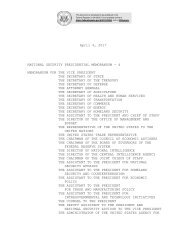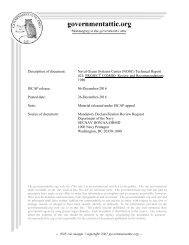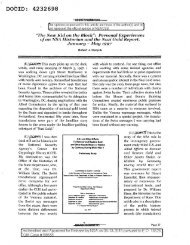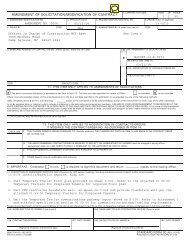IC S&T STRATEGIC PLAN
dni-sci-tech-2016-20-plan
dni-sci-tech-2016-20-plan
Create successful ePaper yourself
Turn your PDF publications into a flip-book with our unique Google optimized e-Paper software.
FY2016-2020 <strong>IC</strong> S&T STRATEG<strong>IC</strong> <strong>PLAN</strong>: MANAGING RISK TO ENSURE INTELLIGENCE ADVANTAGEInform Stakeholders of New Technology OpportunitiesEnsuring that current anticipated <strong>IC</strong> needs align with promising technology development activities is animportant consideration in prioritizing S&T investments, but it is not the only one. Investment decisions onnew technological capabilities should not be driven solely by user requirements, but should also be informedby new technical developments—regardless of where they originate. In particular, decision-makers requireknowledge of, and exposure to, global R&D trends that could affect US national security or undermine the USGovernment’s R&D efforts.S&T forecasting processes led by DS&T feed the ongoing development of an enterprise S&T Strategic Plan.Forecasts and products such as the S&T Estimate 4 are used to inform <strong>IC</strong> customers and the NISTC 5 of noveland prospective developments that could ultimately impact <strong>IC</strong> operations.The Estimate highlights technology sectors with the potential to impact the <strong>IC</strong> enterprise during the nextten years or which are expected to show rapid evolution. By identifying these key sectors, the Estimateprovides a starting point for enterprise-level strategic planning, informs inquiry to subject matter expertswithin and outside of the <strong>IC</strong> S&T community, and establishes context to explore potential threats tocurrent and projected capabilities. It is available to all executive branch agencies as well as any clearedcontractor, federally funded research and development center (FFRDC) or university-associated researchcenter (UARC) via the R-Space website. This broad availability will allow synergies and integration amonggovernment agencies and informs industry investment planning.Combined with inputs from the elements, the S&T forecasting process will influence the IntelligencePlanning, Programming, Budgeting and Evaluation (IPPBE) process and <strong>IC</strong> element R&T investment activitiesthrough integrating forecast projections and findings into the DNI’s Consolidated Intelligence Guidance (CIG).To further inform industry partners’ investment decisions, DS&T uses non-proprietary summary data fromthe Partner Response and its associated RFI to provide feedback to the respondents as well as R-Spaceparticipants. This information includes a preliminary market analysis of current and future opportunitiesbased on the Landscape Needs. In addition to affirming the DS&T commitment to building partnershipsacross the public- and private-sectors, this outreach to industry is critical to the development of In-STeP(See Figure 3.2).4 The most recent iteration of the Estimate, the Science and Technology Estimate: 2012-2022, is located at: http://intelshare.intelink.ic.gov/sites/acquisitiontechnology/sciTech/Products%20Repository/SandT%20Estimate_FINAL-PRINT.pdf (JW<strong>IC</strong>S)5 By statute, the NISTC is designated to be the standing body for the coordination and communication of S&T priorities and R&Dinvestments across the <strong>IC</strong>. The NISTC is chaired by the DS&T, and its members include the principal science advisors of theelements of the National Intelligence Program. The Intelligence Reform and Terrorism Prevention Act of 2004 establishes andbroadly describes the duties and functions of the DS&T and the NISTC.10


